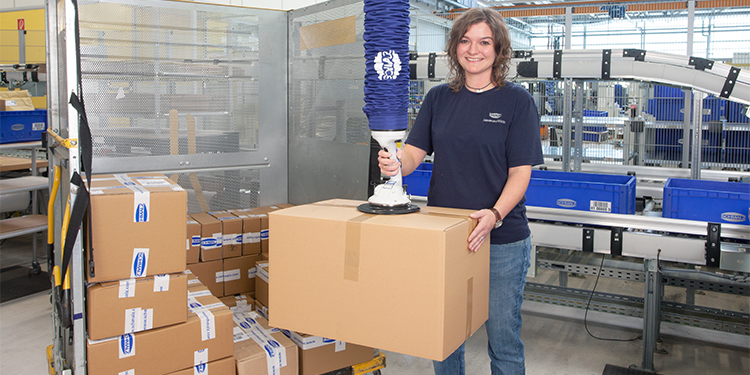Use Improvement Assessment Checklists As Part Of Your Ergonomic Evaluation Tools

To lower the risk and severity of musculoskeletal injuries associated with manual handling tasks, there are a variety of interventions and improvements that can occur. Multiple benefits can be gained when managers and workers seek new handling practices and equipment to minimize overexertion and repetitive motions. These include a reduction in injuries and associated worker’s compensation costs, as well as a boost in productivity. But before implementing changes, it is important to utilize ergonomic evaluation tools to ensure the highest likelihood of success. Improvement assessment checklists are one such tool.
What are Improvement Assessment Checklists?
An improvement assessment checklist is an ergonomic evaluation tool that helps operations managers more thoroughly consider possible process changes or equipment implementations. The checklists help to determine if the changes or equipment will best match the requirements and needs of a particular workplace.
“Ergonomic Guidelines for Manual Material Handling,” — a free, downloadable publication from the Ergonomic Assist Systems & Equipment (EASE) Council of MHI, the National Institute for Occupational Safety and Health (NIOSH), and the California Division of Occupational Safety and Health (Cal/OSHA) — shares recommendations for using these checklists.
Ergonomic Evaluation Tool #1: Process Improvement Checklist

When considering potential changes to existing processes to improve ergonomics associated with manual material handling, ask the following questions. Assess each option individually to determine if the improvement will:
- Reduce or eliminate most or all of the identified risk factors?
- Add any new, previously unidentified, risk factors?
- Be affordable for the organization, or is there a simpler, less expensive alternative that could be equally effective?
- Affect productivity or efficiency?
- Affect product or service quality?
- Provide a temporary or permanent solution?
- Be accepted by employees?
- Affect employee morale?
- Be fully implementable — including training — in a reasonable amount of time?
- Affect current wage rates or any collective bargaining agreements?
Ergonomic Evaluation Tool #2: Equipment Investment Checklist

For operations thinking of implementing new equipment to aid in material handling, ask the following questions. This assessment should occur in conjunction with the process improvement checklist detailed above. The objective is to ensure the selection of the most appropriate piece of equipment to improve the fit between the worker and the task. For each piece of equipment under consideration, determine if it will:
- Reach far enough to cover the work area?
- Handle the weight and shape of the product?
- Re-orient the load as needed for production?
- Be easy to load or unload?
- Require much force or energy to push it, steer it around corners, or stop it at the destination?
- Be heavy or large?
- Handle the load in a safe and controlled manner? Is the load held securely and is it well balanced? Will cables or chains allow too much movement compared with rigid links?
- Allow an adequate field of view for the operator?
- Slow workers down too much to meet production requirements?
- Interface with existing equipment and structures? Will weight-bearing columns, shelving, or other structures block the equipment’s movement?
- Need an additional power supply beyond what is currently in place?
Access More Ergonomic Evaluation Tools
Looking for more ideas about how to minimize the risk of employee injuries and improve workplace safety? The Ergonomic Assist Systems & Equipment (EASE) Council of MHI offers a broad assortment of ergonomic evaluation tools and publications. These include checklists, presentations and seminars, articles, technical papers, a training course, podcasts and webinars, and other ergonomic resources. Further, EASE Council members are always available to consult, answer questions, and make recommendations. Learn more about EASE.



